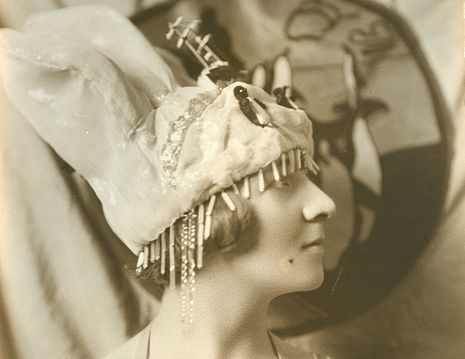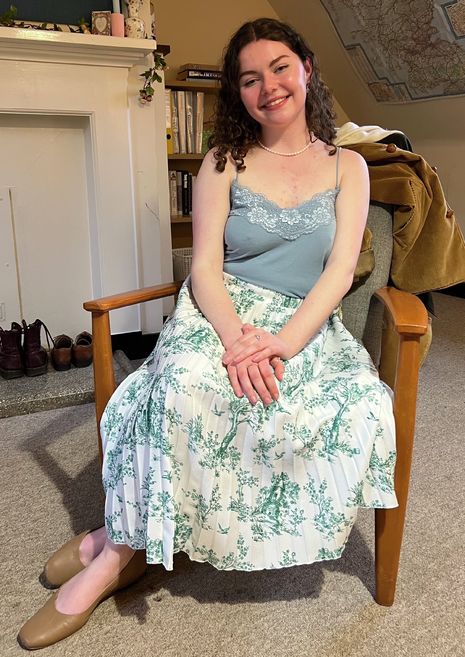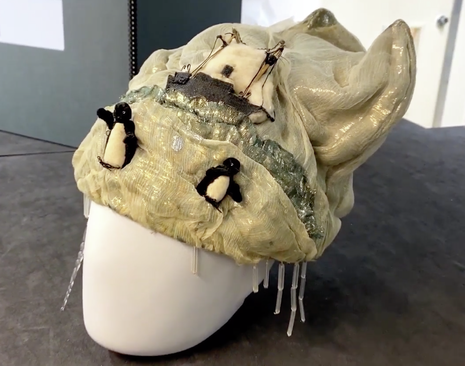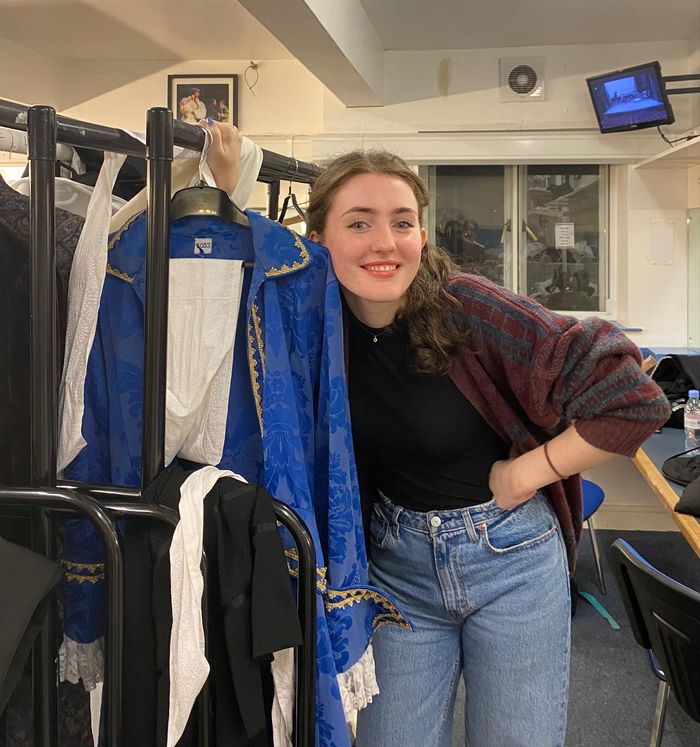Meet the student tailor reconnecting with history, one ruffle at a time
Whether they’re making elaborate costumes for Cambridge theatre, or recreating a historical garment for one of Cambridge’s museums, the city is home to some very talented student tailors. We’ve spoken to one of them, Aimee, who is recreating a polar costume for the Cambridge Festival.

For most of us, sewing is an impressive, yet somewhat mysterious skill. The ability to create something intricate and beautiful out of thread and fabric alludes the many who are unlikely to have moved beyond creating a slightly wonky pin cushion in year nine design class. In the fast paced world of Cambridge, these more careful and lengthy crafts often don’t receive the attention they deserve, but that doesn’t mean our sewing population is obsolete. Whether they are making elaborate costumes for Cambridge theatre, or in this case, recreating a historical garment for one of Cambridge’s museums, the city is home to some very talented student tailors, busy at whirring sewing machines.
“I find it quite hard to put a project down because I think I’ll still be sewing in my head”
I meet Aimee in her attic room in Corpus. Hanging up next to her sewing machine is her current toile, the prototype of the 1920s costume that she is recreating for the Cambridge Festival. The costume was originally worn by the polar enthusiast Dorothy Irving Bell at the Chelsea Arts Ball in 1923, and is being recreated by Aimee and others as a way of retelling the previously hidden stories of women in early polar research. Recreating the costume, which includes an incredibly camp penguin-adorned hat, was a chance to rediscover a piece of history that otherwise “has to sit in the Scott Polar Research Institute archives” and interact with it in a more personal way. The recreated costume will eventually be presented to an audience, who will be able to wear this strange art deco creation themselves. Not only is the polar costume being brought out of the archives, but so is the story of the relatively unknown female polar expert, Dorothy.

Aimee gives me a cup of tea, served on a gorgeous hand sewn coaster with a floral pattern. She tells me about how she heard about the project on Facebook and jumped at the chance to get involved, having previously done some work making costumes for the Cambridge theatre scene. Aimee talks of how “being actually able to make the pieces kind of tells you a little bit more about why the like costume has been created in a certain way”. Aimee’s initial confusion about why Dorothy was not pictured in the original ruffle was dispelled when she actually had to wear the garment, realising that it was “really hot” and uncomfortable to wear. Meticulously recreating each garment has been a “different way of getting into the historical practice”, and has connected Aimee with Dorothy, despite them being born over 100 years apart.

Aimee recounts how she has always had an interest in sewing, which was captured further when she “worked in a haberdashery shop”, spending “most of [her] wages” on “discontinued patterns”. It could be easy to dismiss hobby sewing as a dying skill, kept barely alive by a few die-hard individuals. However, like other interests, social media has provided a means for a growing community to form around “historical sewing”, specifically “Costube”, a community united in their interest in historical fashion and costuming. Aimee’s discovery of the community invited her into a “whole new area of sewing”, inspired by creators such as “Bernadette Banner and Cathy Hay”. Aimee feels that historical sewing has “blown up a lot recently”, leading her to create garments such as an “18th century men’s shirt”, as well as more quirky projects like Dorothy’s costume.
At a time when the trend cycle seems to be accelerating exponentially, and it is easier than ever to access seemingly limitless options at the click of a finger (or mouse), many are finding creating their own garments to be a practical and spiritual antidote. Aimee describes sewing as “empowering” and enjoys how “it just allows you to take so much control over your wardrobe”. Beyond this, the act of sewing can be therapeutic; “the actual journey of going through the sewing process, it teaches you so much, it’s about that journey, as much as it’s about making yourself a nice skirt”. Reflecting on the “lengthy process” of sewing also gave us pause when we considered how, despite its lengthiness, it has also grown into the world’s third largest manufacturing industry. Aimiee said that sewing yourself “gives you an appreciation for what people are doing in fast fashion, and the speed with which people are being forced to work is ridiculous”.
Just like any Cambridge student, Aimee has found it “really difficult to juggle” her sewing ventures with a typically busy degree. She says “I find it quite hard to put a project down because I think I’ll still be sewing in my head”, but is happy to bring what is “a massive part of my life” to university. I ask her what advice she would give to anyone wanting to dive into the world of sewing, and her message is clear: “just go for it. I think it doesn’t matter if your sewing is wonky, or if you sew two panels together… I think every sewing project is a learning opportunity”. She recommends “just finding bedsheets in a charity shop. And just chopping it up and having fun with it”.
See the presentation of Aimee’s final costume at the Scott Polar Museum on 20th March at 2pm.
 News / Cambridge students set up encampment calling for Israel divestment6 May 2024
News / Cambridge students set up encampment calling for Israel divestment6 May 2024 News / Cambridge postgrad re-elected as City councillor4 May 2024
News / Cambridge postgrad re-elected as City councillor4 May 2024 News / Proposed changes to Cambridge exam resits remain stricter than most7 May 2024
News / Proposed changes to Cambridge exam resits remain stricter than most7 May 2024 News / Some supervisors’ effective pay rate £3 below living wage, new report finds5 May 2024
News / Some supervisors’ effective pay rate £3 below living wage, new report finds5 May 2024 Fashion / Class and closeted identities: how do fits fit into our cultures?6 May 2024
Fashion / Class and closeted identities: how do fits fit into our cultures?6 May 2024






